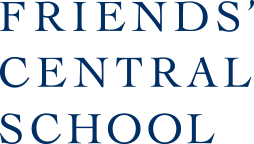
The right middle school for your child makes a tremendous difference in their educational experience! From exploring new passions, engaging in hands-on learning, and building peer relationships, grades 6-8 are a pivotal time for students. Whether your child is transitioning to middle school or looking for a change, finding a school that nurtures their developmental milestones is critical.
There are a number of factors to consider when choosing a school for your child. To help you make a more informed decision, we’ve compiled a list of what to look for.
What to Look For When Choosing a Middle School
1. The School Environment
It’s important to find a caring and supportive environment that also challenges your child academically and personally. Consider whether the school nurtures both intellectual independence and social skills. To accomplish this, make sure you:
- Review the school’s mission statement
- Learn more about its leadership and administration
- Assess the school community
- Look for the presence of diversity in all its forms
- Evaluate its culture to determine whether it encourages inclusion, belonging, and kindness
You want your child in an environment that values both individuals and the community.
Download the Friends' Central Middle School Brochure
2. Average Class Size
If class size isn’t already on your radar as a parent, it should be, as the number of students in each class plays a tremendous role in your child’s experience. There are many benefits of small classroom sizes in middle school, including:
- More attention from teachers, meaning that they get to know your individual child and their needs better
- Increased opportunities for experiential, hands-on learning
- More opportunities for students to contribute in class
- More thoughtful feedback
Teachers of smaller classrooms are able to provide a more individualized experience for each student, fostering growth and communication in the classroom.
3. Curriculum
Equally important to class size is its content and structure. It’s important to look for a curriculum that is challenging, hands-on and relevant. Whether public, private, or independent, a standard curriculum will include English, Math, History, Science, World Language, and electives such as Performance and Visual Arts.
Unique curriculums offer more to explore, such as:
- Learning through service, combining students’ academic learning with community-based problem solving
- STEAM, an educational philosophy that evolved from STEM, which stands for Science, Technology, Engineering, and Math. The “A” stands for “Arts,” incorporating creativity, collaboration, and critical thinking skills.
- Experiential learning, focusing on hands-on experiences and exercises as a way to produce more invested, well-rounded learners
4. The Schedule
While the students’ education is important, their schedule is equally so. A well-rounded schedule should balance instructional time with community-building opportunities and students' needs (recess, breaks, and time for movement).
Why is this important? These breaks allow your child to interact with a larger, more diverse peer group and allows a mental break so that they can focus more effectively during their academic time.
Paying attention to what a school makes time for will reveal a lot about what they value as a learning community.
5. Student Supports
Supporting students’ needs begins in the classroom with their teachers. Teachers should care as much about building relationships with students to support their learning as they do about their curriculum.
Your child should be supported by more than just their teachers though; at most schools, student support is typically provided by a guidance counselor who oversees an assigned group of students. While school guidance counselors play a critical role, the national average caseload of students per counselor often limits the one-to-one relationship building interactions crucial to students at this age.
Advisory programs, on the other hand, are designed to create a strong support system that encourages students development academically, socially, and emotionally.
To better understand the support your child would receive, ask questions like:
- What is the teacher retention rate?
- How happy are teachers?
- What is the guidance counselor’s caseload?
- Is there a robust advisory program?
6. Student Development & Outcomes
Your search for the right middle school should lead you to a place where students are both pushed and supported in their learning and development alike.
A school should foster skills like studying, time-management, and organization in your child. These takeaways must be integrated into the curriculum to support the development of good long-term work habits, preparing your child for high school and beyond.
Their peer-to-peer social skills are equally important. It’s crucial to find a community that embraces collaboration, explores cultural differences and encourages relationship building.
Finding a school where your child can thrive academically, emotionally, and socially is integral to raising a well-rounded, lifelong learner.
7. Opportunities & Experiences
The right middle school will offer a wide variety of opportunities and experiences for students to engage in, and the ability to pursue passions they already have.
Explore a school’s activities to determine whether they offer:
- Affinity groups
- Athletic programs
- Clubs
- Community engagement initiatives
- Guest speakers
- Student leadership opportunities
- Trips
Any school you are considering should offer at least one way for your child to get involved.
What’s Next?
Whether you are simply exploring options for your child, choosing between public vs. private schooling, or confirming a choice you’ve already made, these factors should be considered. Weigh your options to choose the best community for you and your child!



